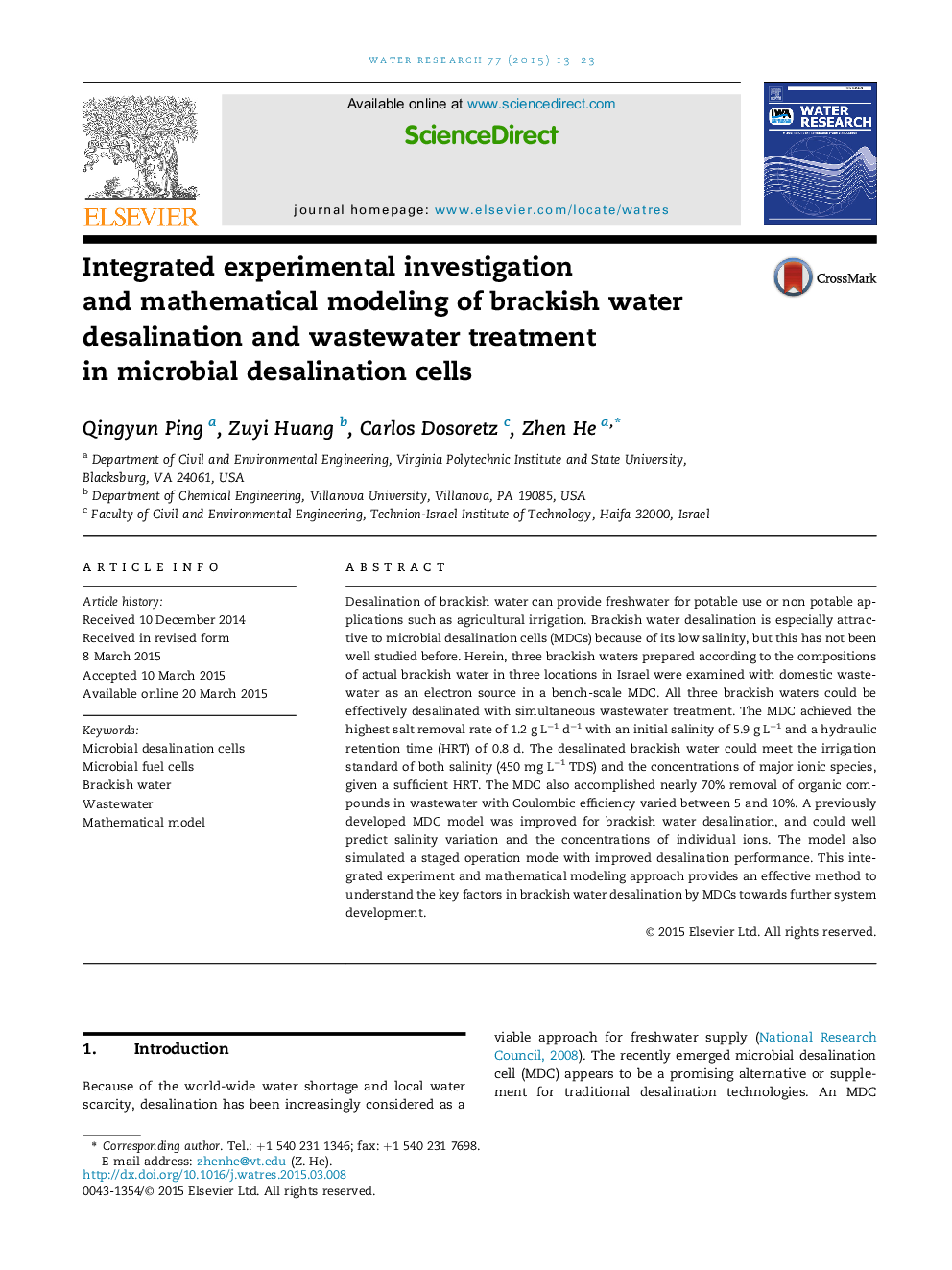| کد مقاله | کد نشریه | سال انتشار | مقاله انگلیسی | نسخه تمام متن |
|---|---|---|---|---|
| 4481127 | 1623091 | 2015 | 11 صفحه PDF | دانلود رایگان |
• Microbial desalination cells can effectively desalinate brackish water.
• Hydraulic retention time is a key factor affecting the system performance.
• Given sufficient time, the desalinated effluent can meet irrigation requirement.
• A mathematical model can well predict MDC performance.
• Model simulation indicates that staged operation can achieve better desalination.
Desalination of brackish water can provide freshwater for potable use or non potable applications such as agricultural irrigation. Brackish water desalination is especially attractive to microbial desalination cells (MDCs) because of its low salinity, but this has not been well studied before. Herein, three brackish waters prepared according to the compositions of actual brackish water in three locations in Israel were examined with domestic wastewater as an electron source in a bench-scale MDC. All three brackish waters could be effectively desalinated with simultaneous wastewater treatment. The MDC achieved the highest salt removal rate of 1.2 g L−1 d−1 with an initial salinity of 5.9 g L−1 and a hydraulic retention time (HRT) of 0.8 d. The desalinated brackish water could meet the irrigation standard of both salinity (450 mg L−1 TDS) and the concentrations of major ionic species, given a sufficient HRT. The MDC also accomplished nearly 70% removal of organic compounds in wastewater with Coulombic efficiency varied between 5 and 10%. A previously developed MDC model was improved for brackish water desalination, and could well predict salinity variation and the concentrations of individual ions. The model also simulated a staged operation mode with improved desalination performance. This integrated experiment and mathematical modeling approach provides an effective method to understand the key factors in brackish water desalination by MDCs towards further system development.
Figure optionsDownload high-quality image (183 K)Download as PowerPoint slide
Journal: Water Research - Volume 77, 15 June 2015, Pages 13–23
